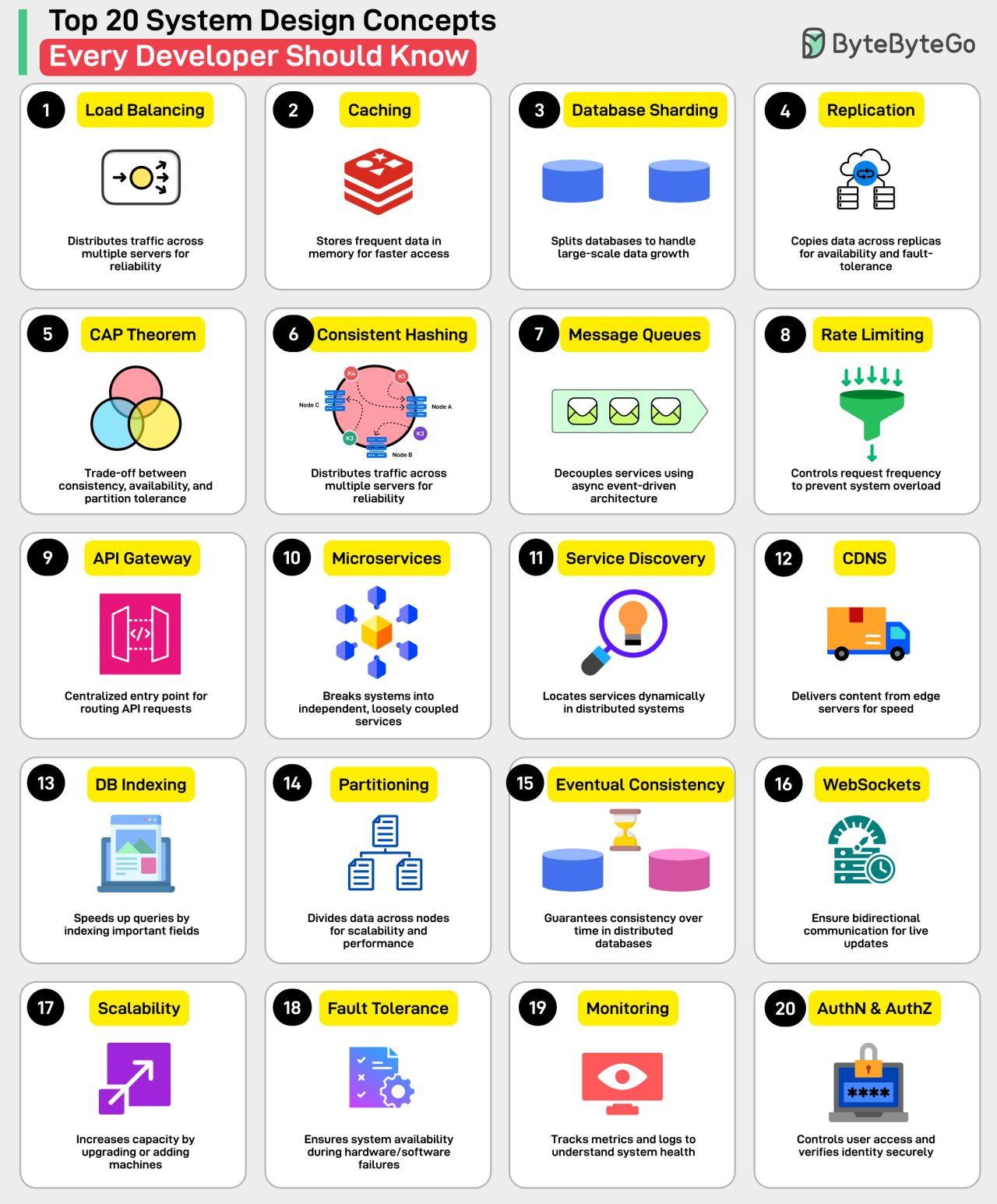Top 20 System Design Concepts You Should Know

Load Balancing: Distributes traffic across multiple servers for reliability and availability.
Caching: Stores frequently accessed data in memory for faster access.
Database Sharding: Splits databases to handle large-scale data growth.
Replication: Copies data across replicas for availability and fault tolerance.
CAP Theorem: Trade-off between consistency, availability, and partition tolerance.
Consistent Hashing: Distributes load evenly in dynamic server environments.
Message Queues: Decouples services using asynchronous event-driven architecture.
Rate Limiting: Controls request frequency to prevent system overload.
API Gateway: Centralized entry point for routing API requests.
Microservices: Breaks systems into independent, loosely coupled services.
Service Discovery: Locates services dynamically in distributed systems.
CDN: Delivers content from edge servers for speed.
Database Indexing: Speeds up queries by indexing important fields.
Data Partitioning: Divides data across nodes for scalability and performance.
Eventual Consistency: Guarantees consistency over time in distributed databases
WebSockets: Enables bi-directional communication for live updates.
Scalability: Increases capacity by upgrading or adding machines.
Fault Tolerance: Ensures system availability during hardware/software failures.
Monitoring: Tracks metrics and logs to understand system health.
Authentication & Authorization: Controls user access and verifies identity securely.